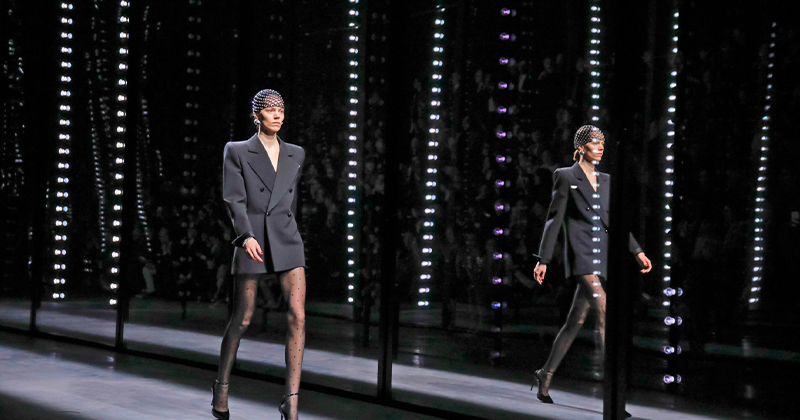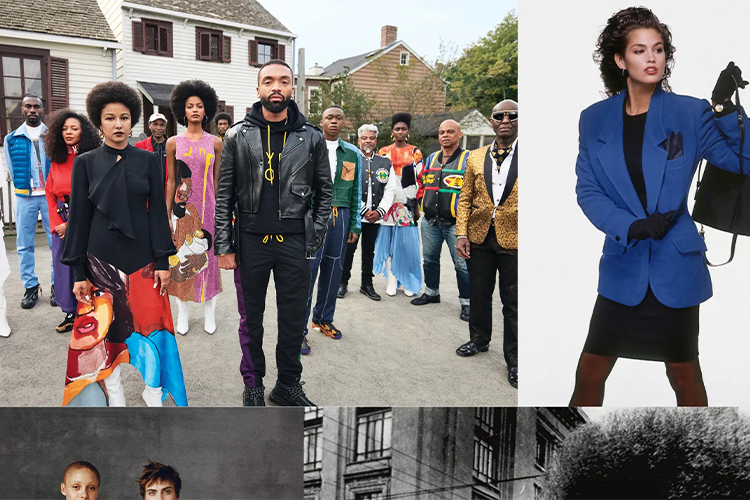
The Influence of Fashion on the Concept of Power Dressing
Fashion has always been an influential force in society, shaping not only personal style but also the way we perceive power and authority. Power dressing, the practice of dressing in a way that exudes confidence, authority, and professionalism, has undergone significant transformations over the years. From the structured and formal attire of the past to the more contemporary and expressive styles of today, fashion continues to play a pivotal role in defining and redefining the concept of power dressing.

Cultural Influences:
Power dressing is not limited to a single culture or region. Fashion and power dressing have different interpretations and influences across various cultures. For example, traditional attire, such as the kimono in Japan or the saree in India, can be imbued with a sense of power and authority when worn in certain contexts. Exploring how different cultures incorporate fashion into power dressing can provide a more comprehensive understanding of its global impact.
Fashion and Body Language:
Power dressing extends beyond the garments themselves; it also encompasses body language and nonverbal communication. The way one carries themselves while dressed in powerful attire can significantly impact how they are perceived. Fashion can influence posture, gait, and overall body language, enhancing the projection of authority and confidence.
Breaking Stereotypes:
Fashion has played a significant role in challenging traditional gender stereotypes associated with power dressing. The rise of gender-neutral and gender-fluid fashion has provided individuals with more options to express their identity while still maintaining a sense of power and professionalism. Exploring how fashion has contributed to breaking gender norms and embracing inclusivity within power dressing can highlight the transformative potential of fashion in society.
The Influence of Technology:
The advent of technology and the rise of virtual interactions have also influenced power dressing. With more people working remotely or participating in virtual meetings, the focus has shifted to creating a powerful presence through digital platforms. Fashion choices, such as selecting appropriate colors, patterns, and accessories, can enhance one’s impact and engagement in the virtual realm.
Sustainability and Ethical Considerations:
The fashion industry has faced increasing scrutiny regarding its environmental impact and labor practices. The concept of power dressing can also encompass considerations of sustainability and ethical fashion choices. Exploring how individuals can embrace power dressing while being mindful of the environmental and social consequences of their clothing choices can shed light on the evolving values within the fashion industry.
The Rise of Athleisure:
The emergence of athleisure, a blend of athletic and leisurewear, has challenged traditional notions of power dressing. Athleisure has gained popularity in recent years, with individuals opting for comfortable and casual clothing styles even in professional settings. This shift in fashion reflects a changing perception of power, emphasizing comfort, flexibility, and a more relaxed approach to authority.

A-line Dress:
An A-line dress is fitted at the waist and gradually flares out towards the hem, creating an “A” shape. This style is flattering on most body types as it accentuates the waist and skims over the hips and thighs.
Wrap Dress:
A wrap dress features a front closure that wraps around the body, creating a flattering V-neckline and adjustable fit. This style is known for its versatility and ability to accentuate the waist while accommodating different bust sizes.
Fit-and-Flare Dress:
The fit-and-flare dress is fitted at the waist and flares out into a fuller skirt, creating an hourglass silhouette. This style enhances the waistline and adds volume to the lower half, making it a flattering choice for various body shapes.
Sheath Dress:
A sheath dress is typically form-fitting and falls straight down from the shoulders. It skims over the body, highlighting curves without excessive volume. This style is suitable for a more streamlined and tailored look.
Maxi Dress:
Maxi dresses are long, flowy dresses that can be either fitted or loose. They are versatile and can be styled for casual or formal occasions. Maxi dresses elongate the body and provide a relaxed and effortless look.
Shirt Dress:
Inspired by men’s button-down shirts, a shirt dress typically features a collared neckline, button front, and a structured silhouette. This style can be cinched at the waist with a belt to create a more defined shape.
Off-the-Shoulder Dress:
Off-the-shoulder dresses expose the shoulders and collarbones, creating an elegant and feminine look. This style can be found in various lengths and can flatter a range of body types.
Shift Dress:
A shift dress is a loose-fitting dress that hangs straight down from the shoulders, typically without a defined waistline. It provides a relaxed and comfortable fit while still maintaining a stylish and polished appearance.
Empire Waist Dress:
An empire waist dress features a high waistline just below the bust, with the rest of the dress flowing away from the body. This style can create the illusion of a longer torso and is particularly flattering for those with a pear-shaped or hourglass figure.
Peplum Dress:
A peplum dress has a flared ruffle or overskirt attached at the waist, creating a feminine and structured silhouette. This style can add volume and definition to the hips and accentuate the waistline.

Halter Neck Dress:
A halter neck dress features a high neckline that ties or fastens around the neck, leaving the shoulders and back bare. This style can draw attention to the upper body and shoulders while providing a flattering fit for various body shapes.
Pleated Dress:
Pleated dresses have fabric folds that create texture and movement. They can add volume and visual interest to a dress, particularly in the skirt area. Pleats can be vertical, horizontal, or diagonal, and they can be used to create different effects and emphasize different areas of the body.
Midi Dress:
A midi dress is a dress that falls to a length between the knee and the ankle. This versatile length can be flattering on different heights and body shapes. It offers a sophisticated and timeless look suitable for various occasions.
High-Low Dress:
High-low dresses feature a hemline that is shorter in the front and longer in the back. This style provides an interesting visual effect and can showcase the legs while still providing coverage at the back. It can be a fun and trendy option for events where you want to make a statement.
Bodycon Dress:
Bodycon dresses are form-fitting and hug the curves of the body. They are designed to showcase and accentuate the figure. This style can be flattering for those who want to emphasize their curves and create a sleek and sexy look.
Tiered Dress:
Tiered dresses have multiple layers or tiers of fabric that create a tiered effect from top to bottom. This style can add dimension and movement to a dress, providing a playful and feminine look.
Conclusion
Fashion’s influence on power dressing goes beyond the conventional understanding of formal attire and authority. The rise of athleisure, the role of fashion in non-traditional industries, cultural appropriation, fashion as a political statement, the significance of accessories, and the intersectionality of power dressing all contribute to the ever-evolving landscape of fashion’s influence on power dynamics. By delving into these unique steps, we gain a deeper appreciation for the complexity and transformative nature of fashion’s impact on the concept of power dressing.
trending now
Quick Links:
join the club
Categories:
COPYRIGHT © 2025 HOME ON THE GROVE.
